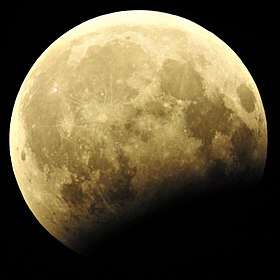January 1982 lunar eclipse
A total lunar eclipse took place on the night between Saturday, January 9 and the pre-dawn of Sunday, January 10, 1982. The Moon was plunged into darkness for 1 hour and 18 minutes, in a deep total eclipse which saw the Moon 33% of its diameter inside the Earth's umbral shadow. The visual effect of this depends on the state of the Earth's atmosphere, but the Moon may have been stained a deep red colour. The partial eclipse lasted for 3 hours and 24 minutes in total.[1]
| Total Lunar Eclipse January 9, 1982 | |
|---|---|
| (No photo) | |
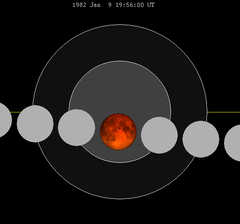 The moon passes west to east (right to left) across the Earth's umbral shadow, shown in hourly intervals. | |
| Series | 124 (47 of 74) |
| Duration (hr:mn:sc) | |
| Totality | |
| Partial | |
| Penumbral | |
| Contacts | |
| P1 | UTC |
| U1 | |
| U2 | |
| Greatest | |
| U3 | |
| U4 | |
| P4 | |
Visibility
It was completely visible over Europe, Africa, Asia and Australia, seen rising over North Atlantic Ocean, and setting over North Pacific Ocean.
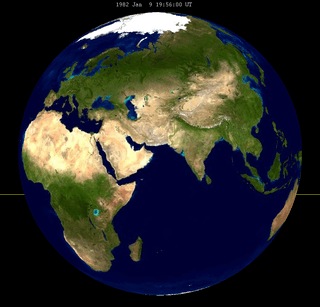
Related eclipses
There were seven eclipses in 1982, the maximum possible, including 4 partial solar eclipses: January 25, July 20, June 21, and December 15.
Lunar year series
| Lunar eclipse series sets from 1980–1984 | ||||||||
|---|---|---|---|---|---|---|---|---|
| Ascending node | Descending node | |||||||
| Saros | Date Viewing |
Type Chart |
Gamma | Saros | Date Viewing |
Type Chart |
Gamma | |
| 109 | 1980 Jul 27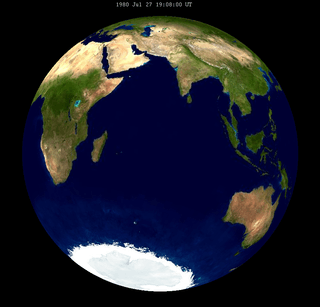 |
Penumbral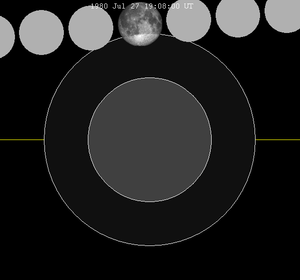 |
1.41391 | 114 | 1981 Jan 20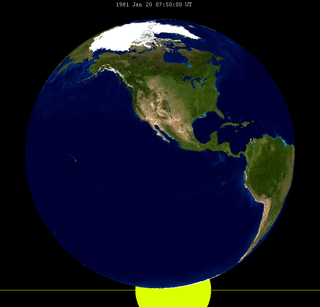 |
Penumbral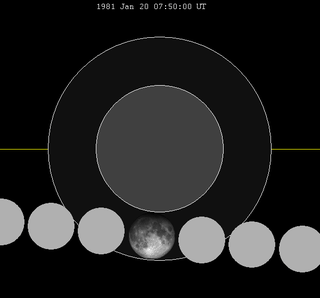 |
-1.01421 | |
| 119 | 1981 Jul 17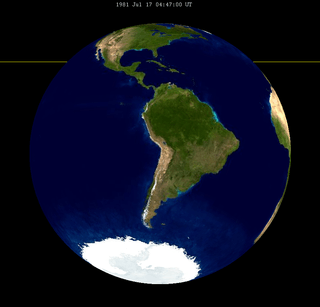 |
Partial |
0.70454 | 124 | 1982 Jan 09 |
Total |
-0.29158 | |
| 129 | 1982 Jul 06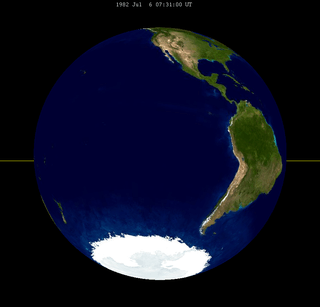 |
Total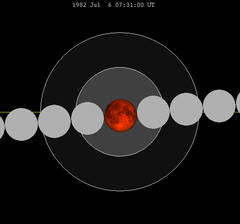 |
-0.05792 | 134 | 1982 Dec 30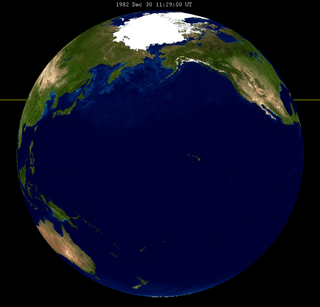 |
Total |
0.37579 | |
| 139 | 1983 Jun 25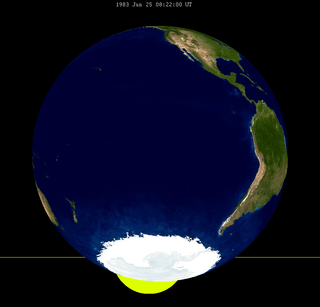 |
Partial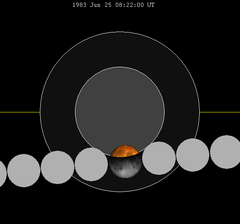 |
-0.81520 | 144 | 1983 Dec 20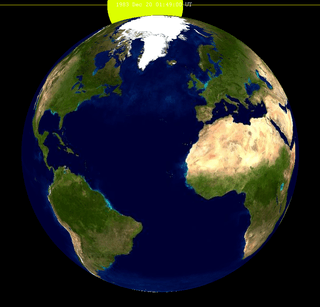 |
Penumbral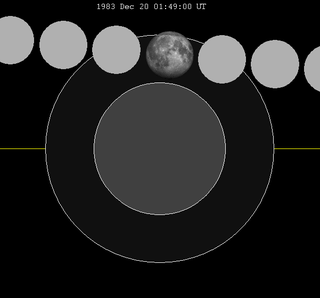 |
1.07468 | |
| 149 | 1984 Jun 13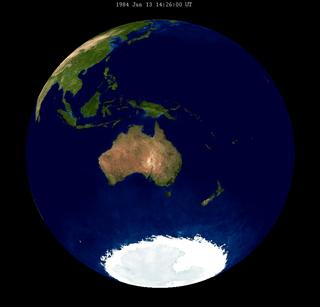 |
Penumbral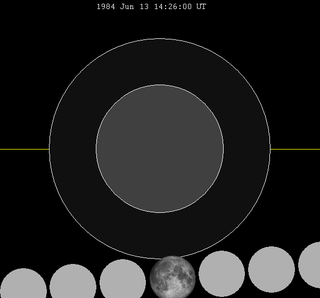 |
-1.52403 | |||||
| Last set | 1980 Aug 26 | Last set | 1980 Mar 13 | |||||
| Next set | 1984 May 26 | Next set | 1984 Nov 20 | |||||
Half-Saros cycle
A lunar eclipse will be preceded and followed by solar eclipses by 9 years and 5.5 days (a half saros).[2] This lunar eclipse is related to two annular solar eclipses of Solar Saros 131.
| January 4, 1973 | January 15, 1991 |
|---|---|
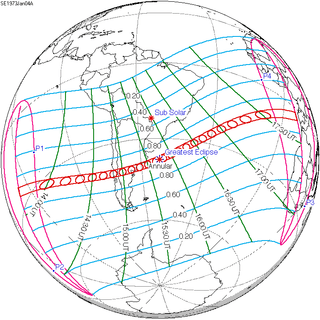 |
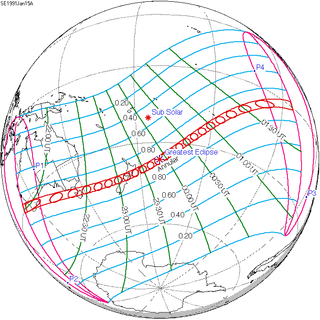 |
See also
- List of lunar eclipses
- List of 20th-century lunar eclipses
Notes
- Hermit Eclipse: Saros cycle 124
- Mathematical Astronomy Morsels, Jean Meeus, p.110, Chapter 18, The half-saros
